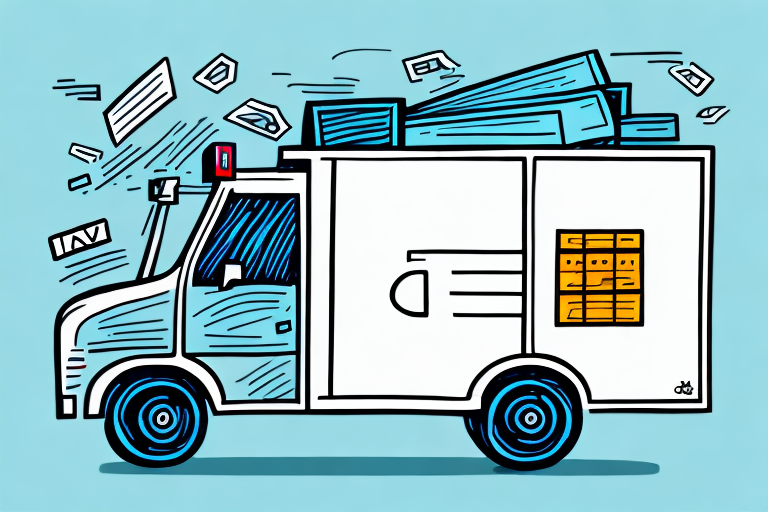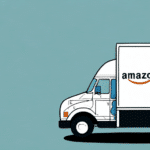Does Amazon Use UPS for Delivery?
Amazon is one of the largest and most influential companies in the world, with delivery being a crucial part of its operations. Over the years, Amazon has made significant investments in its delivery network to ensure that packages reach customers on time and at a reasonable cost. But what role does UPS play in this delivery network? In this article, we delve into the relationship between Amazon and UPS, examining the benefits and drawbacks of using UPS for Amazon deliveries.
Understanding Amazon’s Delivery System
Amazon's Delivery Networks
Amazon operates several delivery networks, including Amazon Prime and Amazon Prime Now, which are responsible for delivering packages to customers globally. These networks are supported by a combination of third-party carriers and Amazon’s own logistics infrastructure.
Third-Party Carriers
Amazon collaborates with various carriers such as UPS, FedEx, USPS, and DHL. Utilizing multiple carriers allows Amazon to ensure efficient and reliable deliveries, especially during peak shopping seasons.
Amazon’s In-House Logistics
In addition to third-party carriers, Amazon has heavily invested in its in-house delivery network, Amazon Logistics. This network includes a vast array of fulfillment centers, sorting facilities, and delivery stations, as well as its own fleet of delivery vehicles, including Amazon Prime vans and Amazon Air cargo planes.
Advanced Technology in Delivery
Amazon leverages sophisticated algorithms and machine learning to optimize delivery routes, predict demand, and manage inventory. Innovative delivery methods, such as drone delivery and in-home delivery, further enhance customer convenience and flexibility.
The Evolution of Amazon’s Delivery Network
From Online Bookstore to Logistics Giant
Amazon has transitioned from an online bookstore to a logistics powerhouse. Initially relying on third-party carriers like UPS, Amazon recognized the need for greater control over its delivery network to meet escalating customer expectations.
Development of Amazon Logistics
Amazon Logistics now manages a significant portion of Amazon’s deliveries with its fleet of vans, planes, and drones. This shift enhances delivery speed and reliability while reducing dependency on carriers like UPS.
Innovative Delivery Solutions
Amazon has introduced services such as Amazon Locker and Amazon Key. Amazon Locker offers self-service delivery locations for package pick-up, while Amazon Key allows delivery drivers to securely place packages inside customers' homes or cars.
Economic Impact
The expansion of Amazon Logistics has created thousands of jobs and investment in employee training programs, fostering career growth and skill development within the company.
The Relationship Between Amazon and UPS
Current Partnership Dynamics
Despite Amazon’s robust in-house logistics, UPS remains a crucial partner, delivering millions of Amazon packages annually. This partnership is vital for maintaining efficient and reliable delivery services.
Competitive Tensions
The growth of Amazon Logistics has introduced competition between Amazon and UPS, traditionally a dominant player in the package delivery market. This competition has led to negotiations over delivery rates and service terms.
Pros and Cons of Using UPS for Amazon Deliveries
Advantages of Partnering with UPS
- Reliability: UPS’s extensive network ensures quick and efficient delivery of packages.
- Experience: UPS has a proven track record in handling diverse package sizes, from small books to large furniture.
- Eco-Friendly Initiatives: UPS’s investments in alternative fuel vehicles align with Amazon’s sustainability goals.
Disadvantages of Partnering with UPS
- Dependency Risks: Relying on a single third-party carrier increases the risk of delays or lost packages.
- Limited Control: As a third-party carrier, Amazon has less oversight over UPS’s delivery processes.
- Cost Considerations: UPS services can be more expensive compared to other carriers, impacting Amazon’s overall delivery costs.
Utilizing Multiple Delivery Carriers
Benefits of a Multi-Carrier Approach
By partnering with various carriers, including UPS, FedEx, USPS, and DHL, Amazon ensures efficient and reliable delivery even during high-demand periods. This strategy also helps in managing shipping costs through competitive rate offerings.
Risk Management
Working with multiple carriers allows Amazon to mitigate risks associated with delays or disruptions in any single carrier’s operations, ensuring continuous delivery service.
Enhanced Shipping Options
A diverse carrier network enables Amazon to offer a variety of shipping options, such as same-day delivery, next-day delivery, and international shipping, providing customers with greater flexibility and choice.
Supporting Local Economies
Collaborating with smaller, local carriers helps Amazon support local businesses and bolster the economies of rural and underserved areas where major carriers may have limited presence.
Comparing UPS with Other Carriers
UPS vs. FedEx, USPS, and DHL
Amazon's choice of delivery partners varies based on package size, destination, and delivery speed. For instance:
- USPS: Ideal for delivering to rural areas due to its extensive network of local carriers.
- DHL: Best suited for international shipping with its global reach and expertise.
- FedEx: Often used for expedited shipping needs.
Each carrier plays a specific role in Amazon’s overall delivery strategy, ensuring comprehensive coverage and service reliability.
The Impact of Amazon’s In-House Delivery Network
Industry Disruption
Amazon's investment in its in-house delivery network poses a significant disruption to the traditional logistics industry. By enhancing delivery speed and reducing dependence on third-party carriers, Amazon sets new standards for delivery services.
Innovative Delivery Methods
Amazon is pioneering the use of drones and autonomous vehicles for deliveries, potentially revolutionizing package delivery, especially in remote and rural areas.
The Efficiency of Third-Party Carriers
Advantages of Using UPS and Other Carriers
Third-party carriers like UPS bring extensive networks and delivery expertise, essential for handling diverse package types and ensuring timely deliveries. Their established infrastructure allows Amazon to scale its operations effectively during peak periods.
The Impact of COVID-19 on Amazon’s Delivery System and UPS Partnership
Supply Chain Disruptions
The COVID-19 pandemic disrupted global supply chains, affecting both Amazon and UPS. However, both companies adapted by implementing safety measures and adjusting delivery processes to maintain service levels.
Resilience and Adaptation
Amazon enhanced its fulfillment capacity and introduced contactless delivery options, while UPS optimized its logistics operations to handle increased package volumes. The strong partnership between Amazon and UPS helped ensure continuity in deliveries despite the pandemic challenges.
Conclusion
UPS remains an essential partner for Amazon, handling the delivery of millions of packages annually. While Amazon has significantly expanded its in-house delivery network through Amazon Logistics, the collaboration with third-party carriers like UPS continues to play a critical role in maintaining efficient and reliable delivery services. By leveraging multiple carriers, Amazon ensures flexibility, cost-effectiveness, and scalability, which are vital for meeting diverse customer needs. As the logistics landscape evolves, the partnership between Amazon and UPS is likely to adapt, continuing to be a cornerstone of Amazon’s delivery strategy.




















